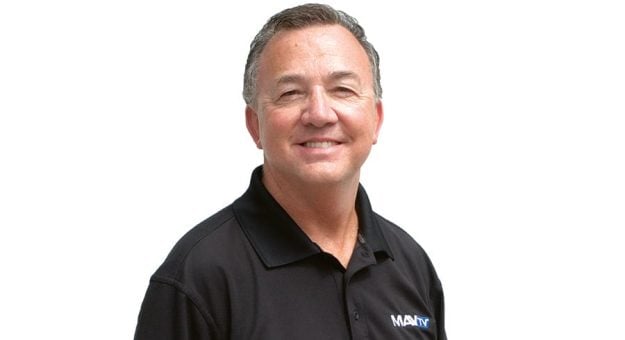“Who keeps turning on that damned yellow light?” It was the late 1960s, before video cameras and cell phones could record motion with the greatest of ease.
“Who keeps turning on that damned yellow light?”
It was the late 1960s, before video cameras and cell phones could record motion with the greatest of ease.
Dick Wallen and his crew — basically Wallen and a couple of guys — had arrived at Sun Valley Speedway on a warm Saturday night in May to record the Little 500 sprint car classic.
Wallen and his crew utilized handheld film cameras — yes, film — to record motion pictures. Although Wallen made his living selling various stock footage to Hollywood movie studios, at his heart he was a devoted racing fan and, on the side, recorded countless open-wheel races over several decades.
In the late 1980s Wallen‘s work would begin to arrive in the form of VHS tape and DVD disc to the homes of thousands of racing fans. That was the era of distribution; the late 1960s was the era of production.
Wallen had cultivated a tight-knit crew of skilled freelancers to run his cameras. A perfectionist, Wallen insisted that his footage be steady, sharp and well-composed. Joe Creek, Dave Pratt and Carl Lockwood worked a great many races with Wallen at tracks throughout the nation.
Pratt had traveled to Anderson on this fateful night to run a camera for Wallen. Pratt was a young guy, and he brought along an attractive lady friend.
In the 1960s the sight of a motion picture camera at a race track was an absolute rarity. There were lots of still photographers, of course, but moving pictures was something altogether different.
Tracks were amazed — and greatly proud — that Wallen felt their event was worth filming.
So Wallen talked with track owner Joe Helpling about how to best situate his two or three cameras around the track. There were no camera stands or platforms, so Wallen walked around the track, looking for ideas.
Sun Valley had launched a hugely successful Figure 8 division in 1960, part of their Saturday night program. Because the Figure 8 course didn‘t run along the front straightaway, a second flagstand was built just outside turn four, allowing the starter to flag the Figure 8 races.
Obviously, this stand wasn‘t going to be used at the Little 500. So Wallen asked Helpling, “Would it be OK to put one of our cameras up in the unused turn four flagstand?”
Helpling thought that would be a fine idea, and everything was good.
As evening arrived, Wallen and his guys began to get into position.
“OK if my friend gets up here with me?” Pratt asked Wallen.
“Sure,” Wallen replied. “No problem.”
Pratt climbed up the steel steps and into the small stand, then helped the young woman up as well.
As darkness fell the cars were rolled onto the grid, and the deafening roar of 33 sprint cars soon filled the air. Pratt frantically panned his camera as cars swept past, just below his feet. It was a fantastic shot, almost too good to be true.
Well, it was. Too good to be true.
The laps started to click away when suddenly the yellow safety light blinked on. Starter Butch Brooks was confused; he hadn‘t turned the light on. But the field quickly slowed, looking up at Brooks as they passed the front straightaway. Brooks had no choice but to display the yellow flag.
The field was reset and Brooks waved the green, taking special care to push the green button in the small electrical box that controlled the safety lights. All was well until, just a few laps later, the yellow light came on again.
Same drill. Brooks hadn‘t turned the light on, but he got the field slowed down and ready to restart. This time Helpling and the officials in the tower were more than a little peeved, and they railed at Brooks to be more careful and quit turning the yellow on by accident.
Brooks was firm; I didn‘t turn it on.
Yeah, sure.
Once more Brooks threw the green and the race resumed. Sure enough, after a few more laps, the yellow light came back on.
By now it was chaos in the scorers‘ tower. Brooks angrily turned and stared at the tower, shrugging his shoulders.
If you didn‘t turn on the yellow light … who did?
Suddenly Brooks turned and looked toward the second flagstand in turn four, and realized what was happening.
The safety lights had been wired through two switches, one in each flagstand. Whenever Pratt‘s lady friend leaned back against the steel railing of the flag stand, her rump pressed against the switch box and engaged the yellow light.
Within moments track officials descended upon the flagstand. With not a lot of warm words and butterflies, Pratt and his lady friend were escorted off the stand and instructed to find another place to film the race.
The race resumed and there were no more phantom caution lights. Pratt and Wallen would laugh about the incident for the next 50 years, and Pratt always had a sheepish grin as he described climbing down from the flagstand that night.
There is a moral to this story, and it is a simple one: If you bring somebody with you to the track, don‘t let their ass get you into trouble.![]()
